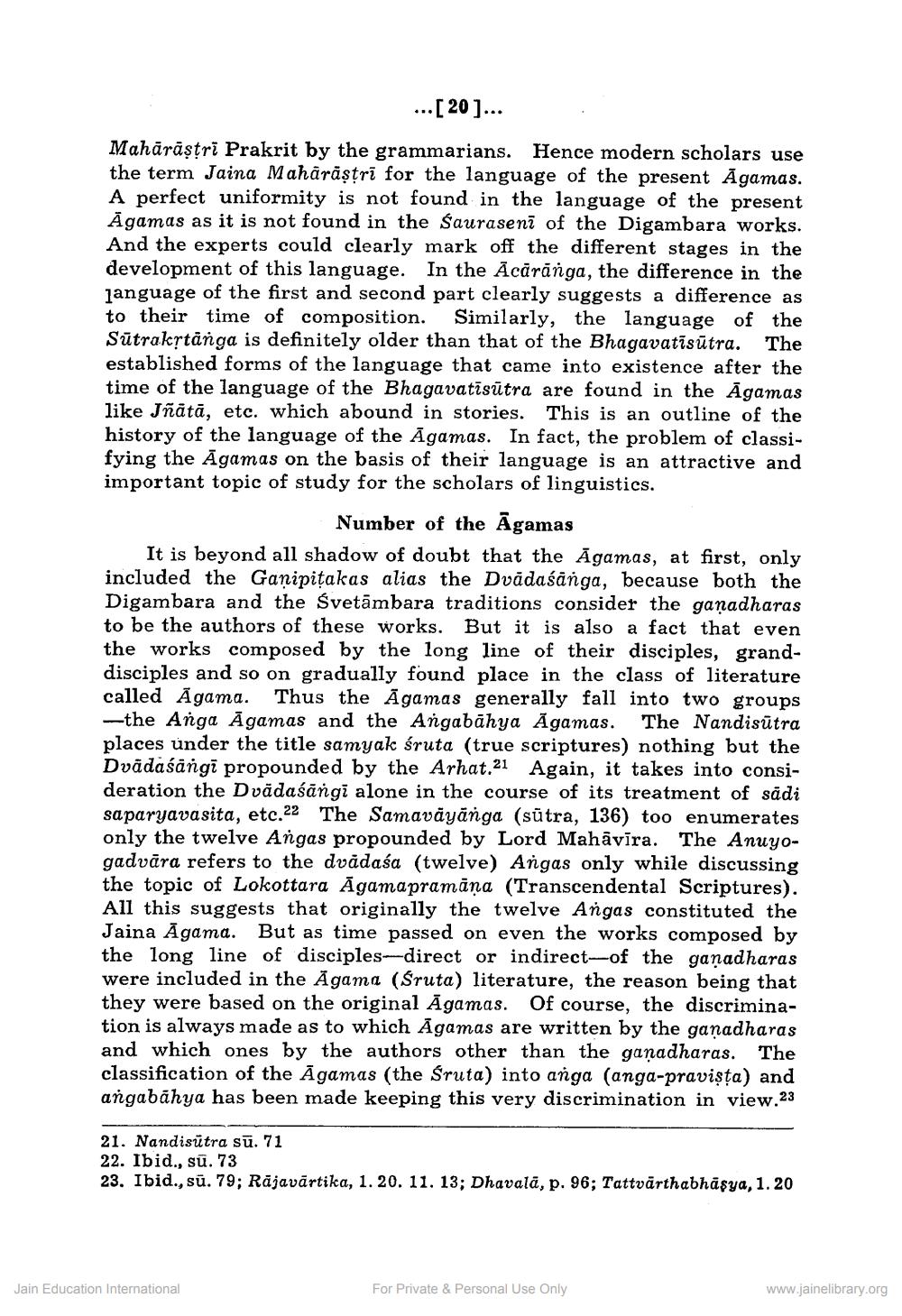________________
...[ 20 ]...
Mahārāṣṭri Prakrit by the grammarians. Hence modern scholars use the term Jaina Mahäräṣṭri for the language of the present Agamas. A perfect uniformity is not found in the language of the present Agamas as it is not found in the Sauraseni of the Digambara works. And the experts could clearly mark off the different stages in the development of this language. In the Acaranga, the difference in the language of the first and second part clearly suggests a difference as to their time of composition. Similarly, the language of the Sutrakṛtänga is definitely older than that of the Bhagavatīsūtra. The established forms of the language that came into existence after the time of the language of the Bhagavatisūtra are found in the Agamas like Jñātā, etc. which abound in stories. This is an outline of the history of the language of the Agamas. In fact, the problem of classifying the Agamas on the basis of their language is an attractive and important topic of study for the scholars of linguistics.
Number of the Agamas
It is beyond all shadow of doubt that the Agamas, at first, only included the Ganipiṭakas alias the Dvadaśānga, because both the Digambara and the Svetambara traditions consider the ganadharas to be the authors of these works. But it is also a fact that even the works composed by the long line of their disciples, granddisciples and so on gradually found place in the class of literature called Agama. Thus the Agamas generally fall into two groups -the Anga Agamas and the Angabahya Agamas. The Nandisutra places under the title samyak śruta (true scriptures) nothing but the Dvadaśängi propounded by the Arhat.21 Again, it takes into consideration the Dvädaśāngi alone in the course of its treatment of sădi saparyavasita, etc.22 The Samaväyänga (sutra, 136) too enumerates only the twelve Angas propounded by Lord Mahavira. The Anuyogadvāra refers to the dvadaśa (twelve) Angas only while discussing the topic of Lokottara Agamapramāna (Transcendental Scriptures). All this suggests that originally the twelve Angas constituted the Jaina Agama. But as time passed on even the works composed by the long line of disciples-direct or indirect-of the ganadharas were included in the Agama (Sruta) literature, the reason being that they were based on the original Agamas. Of course, the discrimination is always made as to which Agamas are written by the ganadharas and which ones by the authors other than the ganadharas. The classification of the Agamas (the Śruta) into anga (anga-praviṣṭa) and angabahya has been made keeping this very discrimination in view.23
21. Nandisutra sū. 71
22. Ibid., su. 73
23. Ibid., sü. 79; Rajavārtika, 1. 20. 11. 13; Dhavala, p. 96; Tattvärthabhäşya, 1. 20
Jain Education International
For Private & Personal Use Only
www.jainelibrary.org




